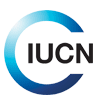
 2 September 2016: The UN Environment Programme – World Conservation Monitoring Centre (UNEP-WCMC) and the International Union for Conservation of Nature (IUCN) launched the ‘Protected Planet Report 2016′ at IUCN’s World Conservation Congress (WCC). The report provides an overview of the status of the global protected area (PA) network and examines how PAs contribute to achieving the Convention on Biodiversity (CBD) Strategic Plan for Biodiversity and the Sustainable Development Goals (SDGs).
2 September 2016: The UN Environment Programme – World Conservation Monitoring Centre (UNEP-WCMC) and the International Union for Conservation of Nature (IUCN) launched the ‘Protected Planet Report 2016′ at IUCN’s World Conservation Congress (WCC). The report provides an overview of the status of the global protected area (PA) network and examines how PAs contribute to achieving the Convention on Biodiversity (CBD) Strategic Plan for Biodiversity and the Sustainable Development Goals (SDGs).
The report finds that almost 15% of the world’s land and 10% of its territorial waters are covered by PAs, with the coverage of marine protected areas (MPAs) increasing by nearly 300% in the last ten years. The Aichi Biodiversity Targets, featured in the CBD Strategic Plan, aim to conserve 17% of the world’s land by 2020. The report notes that Latin America and the Caribbean have the largest amount of land under protection, with Brazil protecting 2.47 million square kilometers. The lowest percentage of PAs is found in the Middle East, where about 3% of land is protected.
‘Protected Planet Report 2016′ also highlights gaps in protection, pointing to the under-representation of key species and habitats and inadequate management that limits the effectiveness of PAs. It finds that PAs cover less than 20% of the world’s key biodiversity areas and less than 20% of countries have assessed the management of their PAs through PA Management Effectiveness Assessments (PAME). “The huge gains in the number and size of PAs made in the last decade have to be matched by improvements in their quality,” said UNEP Executive Director Erik Solheim. He called for more effective protection of the most biologically diverse spaces, saying PAs need to be better connected and local communities must be involved in protection efforts.
The report recommends investing in PAs to halt biodiversity loss, strengthen sustainable management of fisheries and forests, control invasive species, cope with climate change, improve food and water security, enhance resilience to natural disasters and conserve traditional knowledge.
In addition to the report’s release at the WCC, 11 conservation organizations launched a partnership on Key Biodiversity Areas (KBAs), which will identify, map, monitor and conserve such areas. This initiative is also expected to help contribute to achieving the Aichi Targets and the SDGs, especially goals related to protected areas.
The WCC is convening in Honolulu, Hawai’i, the US, from 1-10 September, under the theme, ‘Planet at the Crossroads.’ The report is part of the Protected Planet series. [UNEP-WCMC Press Release] [UNEP Press Release] [IUCN Press Release] [Publication: Protected Planet Report 2016] [WCC Website] [IISD RS Coverage of the WCC] [IISD Natural Resources Policy & Practice Story on KBAs]